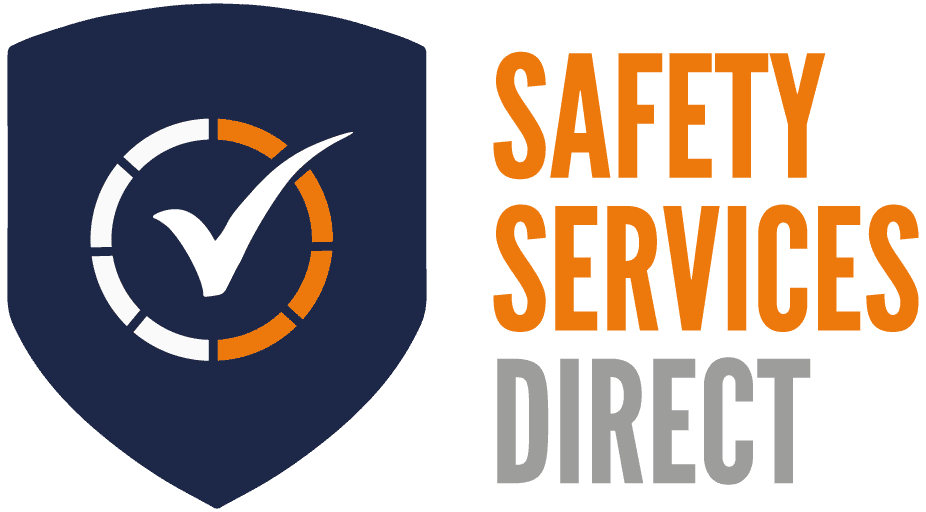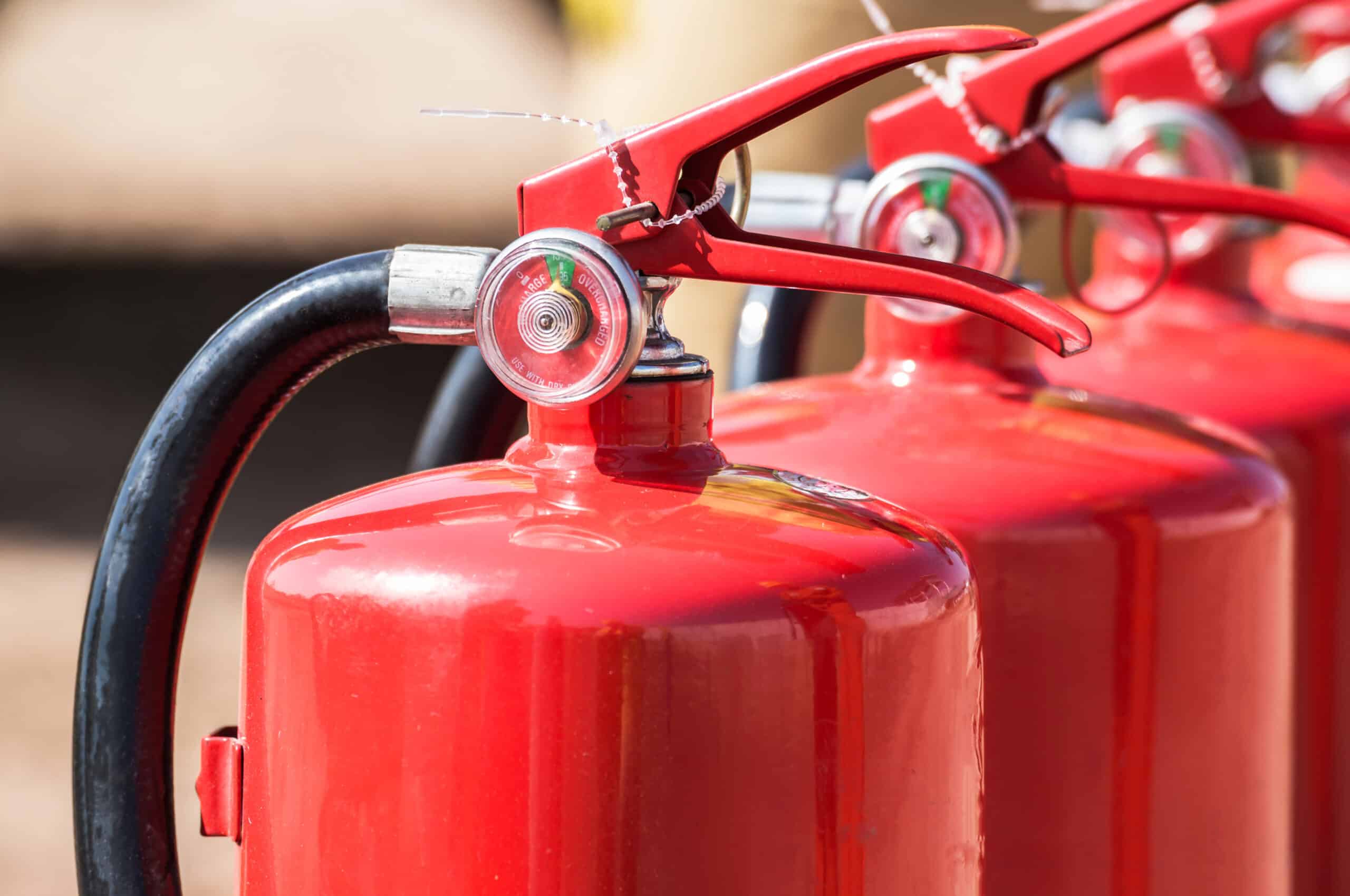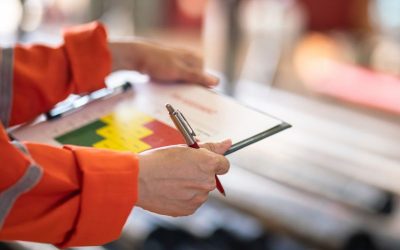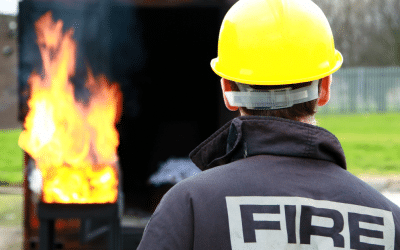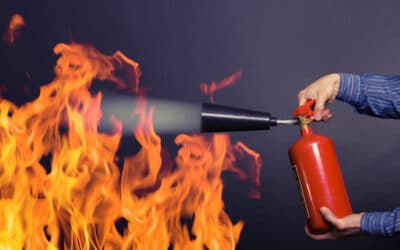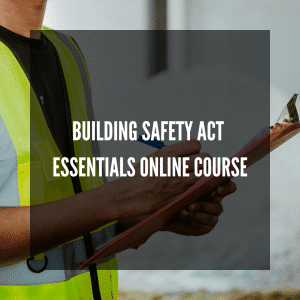Updated: 07/07/2023
Fire safety is a crucial aspect of workplace security, and one of the key components of fire safety is understanding fire extinguishers. While we all endure the occasional inconvenience of fire alarm drills, many companies overlook the importance of training all staff members on fire extinguisher use.
In the event of a small fire, it becomes crucial to know which fire extinguisher to use and how to use it correctly. The safety of everyone in the workplace depends on it.
In this blog, we will explore different types of fire extinguishers, their colour codes, and their uses, ensuring that you have the knowledge necessary to tackle small fires effectively and minimise risks.
What Are The Different Fire Extinguisher Types?
There are five types of fire extinguishers available. Each of these fire extinguishers is specifically designed to combat different types of fires.
Every fire extinguisher within the workplace will have a label on it that informs the user of its ‘type’. Additionally, each ‘type’ of extinguisher has a label that is colour-coordinated to its use.
|
Fire extinguisher type |
Fire extinguisher image |
Fire extinguisher class |
Buy |
| CO2 fire extinguisher | 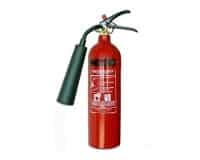 |
B |
https://safetyservicesdirect.com/product/co2-fire-extinguisher/ |
| Foam fire extinguisher | 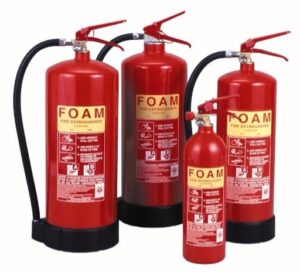 |
A B |
https://safetyservicesdirect.com/product/foam-extinguishers/ |
| Water fire extinguisher | 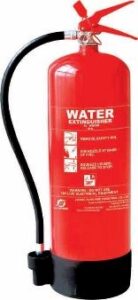 |
A |
https://safetyservicesdirect.com/product/9-litre-water-extinguisher-ews9/ |
| Powder fire extinguisher (not to be confused with a dry powder fire extinguisher) | 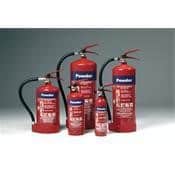 |
A B C |
Water-Fire Extinguishers
Water extinguishers, identified by their red label, are effective against Class A fires, which involve solid materials like wood, paper, and fabrics. They work by cooling the fire and removing heat. However, they should not be used on electrical fires or flammable liquids, as water can conduct electricity and spread the fire.
Foam Fire Extinguishers
Foam extinguishers, recognisable by their red background and cream-coloured label, are suitable for Class A and Class B fires. They create a foam blanket that smothers the fire and prevents re-ignition. They should not be used on electrical fires or cooking oil fires (Class F) as the foam may spread the flammable liquid.
CO2 Fire Extinguishers
CO2 extinguishers have a red label with a black panel at the top and are primarily used for electrical fires. They work by displacing oxygen and suffocating the fire. CO2 extinguishers are also effective against small Class B fires involving flammable liquids. They leave no residue, making them ideal for use in areas with sensitive electrical equipment.
Dry Powder Fire Extinguishers
Dry powder extinguishers have a blue label and are versatile, suitable for Class A, Class B, and Class C fires. They are also effective on electrical fires. The powder works by smothering the fire and interrupting the chemical reaction. However, they can create a cloud that restricts visibility and can be harmful if inhaled; therefore, they should not be used in enclosed spaces.
Wet Chemical Fire Extinguishers
Wet chemical extinguishers, identified by their yellow label, are specifically designed for Class F fires involving cooking oils and fats. They contain a solution that cools the fire and creates a soapy layer to prevent re-ignition. Wet chemical extinguishers are commonly found in commercial kitchens.
Fire Extinguisher Colour Codes
A workplace fire causes a fast-paced, high-stressed situation. Understanding the coloured panels on the fire extinguishers may save valuable seconds when trying to contain a fire.
|
Fire extinguisher type |
Fire extinguisher image |
Fire extinguisher colour (label) |
Buy |
| CO2 fire extinguisher |  |
Red background with a black panel at the top |
https://safetyservicesdirect.com/product/co2-fire-extinguisher/ |
| Foam fire extinguisher |  |
Red background with a cream panel at the top |
https://safetyservicesdirect.com/product/foam-extinguishers/ |
| Water fire extinguisher |  |
Red |
https://safetyservicesdirect.com/product/9-litre-water-extinguisher-ews9/ |
|
Powder fire extinguisher (not to be confused with a dry powder fire extinguisher) |
 |
Red background with a blue panel at the top |
Fire Extinguisher Use
It is crucial that you use the right fire extinguisher when tackling a fire. Use the wrong extinguisher, and you may make the fire worse. If you do not know what extinguisher should be used on a particular type of fire, you should refrain from trying to tackle it yourself.
What Are The Dangers Of Using The Wrong Fire Extinguisher On A Fire?
Using the wrong fire extinguisher on a fire can pose significant dangers and potentially worsen the situation. The specific dangers vary depending on the type of fire extinguisher and the type of fire it is used on.
There are several dangers that can occur from the misuse of a fire extinguisher:
- If a CO2 or water fire extinguisher is used on a metal fire, such as one involving magnesium or titanium, it can actually make the fire worse by spreading or intensifying the flames.
- Water fire extinguishers should never be used on electrical fires, as they can conduct electricity and pose a risk of electric shock.
- Foam fire extinguishers, which are essentially water-based, can also exacerbate electrical fires.
Moreover, using the wrong fire extinguisher may not effectively extinguish the fire, giving it more time to grow and potentially causing greater damage. It is crucial to have a good understanding of the types of fires and the appropriate extinguishers to use in order to mitigate risks and ensure effective fire suppression. If unsure, it is always advisable to evacuate the area and leave fire suppression to trained professionals.
What Fire Extinguishers Are Used For What?
Understanding the appropriate use of fire extinguishers is essential in emergency situations. Different types of fires require specific extinguishing agents for effective suppression. To help you navigate through this vital information, we have compiled a table outlining what fire extinguishers are used for what types of fires.
|
Fire extinguisher type |
Fire extinguisher image |
Fire extinguisher use |
Buy |
| CO2 fire extinguisher |  |
Large computer servers |
https://safetyservicesdirect.com/product/co2-fire-extinguisher/ |
| Foam fire extinguisher |  |
Solids & liquids (including petrol & paint) |
https://safetyservicesdirect.com/product/foam-extinguishers/ |
| Water fire extinguisher |  |
Fires that involve organic solid materials, including: ● Wood ● Paper ● Cloth ● Coal ● Plastics
|
https://safetyservicesdirect.com/product/9-litre-water-extinguisher-ews9/ |
| Powder fire extinguisher (not to be confused with a dry powder fire extinguisher) |  |
Multi-purpose, use on: ● Liquids (grease, oil, fats, petrol, paint) ● Gas fires |
How To Use A Fire Extinguisher
You should only tackle a fire when it is safe to do so and you have a good understanding of which fire extinguisher to use and how to use it. Put your own safety first and foremost at all times. Only tackle small fires; larger fires should be left to the professionals.
Fire Extinguisher Instructions
When faced with a fire and attempting to use a fire extinguisher, it is important to follow proper instructions and prioritise personal safety.
Here are some general fire extinguisher instructions to keep in mind:
- Raise the alarm
- Ensure there is a safe evacuation route
- Find the right extinguish for the fire
- Pull the seal
- Aim the horn at the bottom of the fire (if using a CO2 extinguisher, be careful not to touch the horn as this gets extremely cold)
- Squeeze the handle
- Move the horn from side to side until the fire is out
Remember, fire extinguishers are primarily effective for tackling small, contained fires that are in the early stages. If the fire is large, spreading rapidly, or poses a significant risk, evacuate the premises and contact the fire department.
Proper fire safety training and understanding of fire extinguisher usage are crucial to ensure a safe and effective response in emergency situations. Additionally, it’s also important to have the right fire safety equipment and fire safety signs on your premises as well.
Is It Illegal Not To Have A Fire Extinguisher?
A workplace is legally required to house at least two Class A fire extinguishers. Of course, additional fire extinguishers should be purchased depending on the type of work the company carries out.
Do You Need Fire Extinguishers If You Have A Sprinkler System?
It is a myth that sprinkler systems mean your workplace does not need to house fire extinguishers. The FIA (Fire Industry Association) believes that it is a rare occurrence to find a fire-related workplace situation where a portable extinguisher is not needed.
The presence of a sprinkler system does not eliminate the need for fire extinguishers, as they serve important roles in fire safety. Fire extinguishers provide an immediate response to fire before the sprinkler system activates, allowing individuals to take immediate action in the early stages of a fire. They are particularly useful for tackling small fires that can be easily managed before they escalate.
Additionally, different fire extinguishers are designed to combat specific types of fires, such as electrical fires or fires involving flammable liquids, which may not be effectively addressed by sprinkler systems alone. Fire extinguishers act as a supplementary protection measure alongside sprinkler systems, offering an additional layer of safety.
They can also be used to contain a fire while occupants safely evacuate the building. It’s important to note that compliance with local fire safety regulations and consulting with authorities is essential to ensure the appropriate fire safety measures are in place.
Understand Your Fire Extinguishers Now?
Having a solid understanding of fire extinguishers is essential for workplace safety. By familiarising yourself with the different types, colour codes, and uses of fire extinguishers; you can respond effectively in the event of a small fire and potentially prevent it from escalating.
Remember, always prioritise your safety and evacuate the premises if the fire is beyond your control or poses a significant risk. It is also important to comply with local fire safety regulations and consult with authorities to ensure that the appropriate fire safety measures, including fire extinguishers, are in place.
By being prepared and knowledgeable, you can contribute to a safer work environment for yourself and your colleagues. If you have any questions about fire safety in your workplace or would like to have a fire risk assessment conducted, feel free to get in touch with our team at 0121 756 7249.
